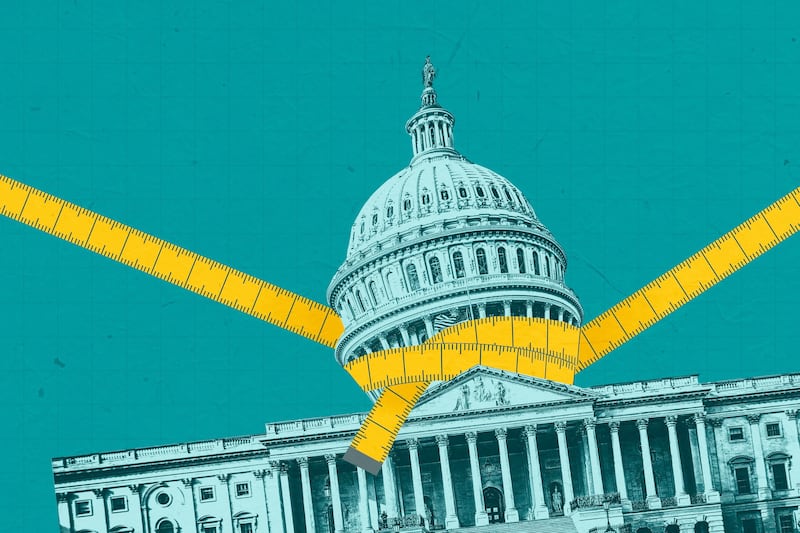During the height of the Mexican-American War of 1846-1848, Gen. Ulysses S. Grant recalled an anecdote about future Confederate Gen. Braxton Bragg.
While Bragg was a young quartermaster lieutenant, he took over the duties of his commanding officer while the more senior officer was away. Filling both the roles of commander and unit provisioner, Bragg sent himself an order for supplies. Bragg then declined the order, saying that the commander (himself) had completed the form incorrectly.
Outraged, Bragg then sent another letter (to himself) demanding that Bragg (as quartermaster) send the supplies immediately. This confusing dialogue continued until Bragg’s commander returned and remarked, “Mr. Bragg, you have quarreled with every officer in the Army, and now you are quarreling with yourself!”
While the story may be apocryphal, it represents how many citizens see their federal government: bloated, convoluted, overregulated, spending too much money to provide services that are over budget, often late and of poor quality. And they can usually find examples to back up their view. It seems that inefficiency touches each level of government, from the national to the local. For example, it took the War Department 16 months to build the Pentagon, but the expansion of New York City’s Second Avenue Subway is still not complete after its initial environmental impact application in 2004. This is in a part of the city that has not had subway access since 1940.
California’s high-speed rail project is another example. In the works for more than 15 years, with no end in sight, it’s said to be $100 billion over budget.
Economists define efficiency as maximizing an outcome per dollar, or resource spent. Given budget constraints, decision-makers should consider how each dollar increases outcomes along with a program’s costs, particularly when balancing competing demands. In the private sector, companies seek profits, but public sector goals are more complex given the mandate to solve collective action problems that may not be profitable but needed for markets to function.
Our nation has serious budgetary issues. Large deficits (and future ones) caused by the last two presidents during times of low interest rates will soon refinance at higher rates. Future appropriators will need to use scarce dollars to pay off the interest bills to stave off default. Appropriators will need to measure each dollar against the benefit it derives the public.
However, our current approach is potentially unhelpful. The federal budget has four main parts: interest on previous debt, national defense, entitlements (such as Medicare, Medicaid and Social Security) and the so-called “discretionary spending.” The last category has been the focus of recent cuts, but it’s the customer service arm of the federal government.
Mass layoffs may prove to be terribly inefficient. First, federal employees account for only 4% of the total budget, but the return on investment for many of the programs they run is quite high. They preserve our national parks, take care of our veterans, procure defense systems that ensure national security and provide research that drives the technologies of tomorrow. Even IRS agents generate nearly $12 of new revenue for one dollar of investment. For a rounding error in the federal budget, PEPFAR — the President’s Emergency Plan for AIDS Relief — increased the life expectancy in Africa from 49.2 to 60.5 years and promoted America’s soft power in the region.
Zeroing out federal employees or foreign aid would do little to solve our budget issues but would hamstring the ability to provide the necessary public goods that markets and societies need to coexist.
The main driver of our systematic budget issues are entitlement spending. However, these programs are the “third rail” of politics (tellingly mislabeled “mandatory” spending). Social Security will not be solvent for future generations if we do not consider gradually lifting the retirement age, some form of means testing and raising the annual cap of Social Security contributions on high-income earners. Medicare also needs to be carefully reevaluated so it can serve future seniors, as do military pensions and veteran care.
Finally, the past couple months feel out of balance because recent executive orders harm the heart of our constitutional system: separation of powers. The founders assigned the power of the purse not to the executive but to the House of Representatives. In the House, James Madison proposed, all regions and types of citizens would have a voice. Compromise and accommodation is needed to steer a large, diverse country such as ours.
Constitutional scholar Yuval Levin recently explained that political incentives are such that Congress no longer wants to engage in policymaking but rather social media stardom and the politics of grievance. The failure of Congress to do its constitutional duties yields power to the executive, a dangerous precedent for those wishing to conserve liberty.
We need to update and reimagine government but we must do so with outcomes in mind, while following the process our constitutional framers envisioned for a healthy republic.


